The Gramercy Tavern Cookbook
One of the best New York restaurants, a culinary landmark that has been changing the face of American dining for decades, now shares its beloved recipes, stories, and pioneering philosophy.
Opened in 1994, Gramercy Tavern is more than just a restaurant. It has become a New York institution earning dozens of accolades, including six James Beard awards. Its impeccable, fiercely seasonal cooking, welcoming and convivial atmosphere, and steadfast commitment to hospitality are unparalleled. The restaurant has its own magic—a sense of community and generosity—that’s captured in these pages for everyone to bring home and savor through 125 recipes.
Restaurateur Danny Meyer’s intimate story of how Gramercy was born sets the stage for executive chef-partner Michael Anthony’s appealing approach to American cooking and recipes that highlight the bounty of the farmer’s market. With 200 sumptuous photographs and personal stories, The Gramercy Tavern Cookbook also gives an insider look into the things that make this establishment unique, from the artists who have shaped its décor and ambience, to the staff members who share what it is like to be a part of this close-knit restaurant family. Above all, food lovers will be inspired to make memorable meals and bring the warmth of Gramercy into their homes.
Michael Anthony
 Michael Anthony grew up in Cincinnati, Ohio, and graduated from Indiana University with degrees in Business, French, and Japanese. He embarked on his culinary career under the guidance of Shizuyo Shima in Tokyo, Japan. Mike fell in love with the simple, seasonal Japanese approach to food.
Michael Anthony grew up in Cincinnati, Ohio, and graduated from Indiana University with degrees in Business, French, and Japanese. He embarked on his culinary career under the guidance of Shizuyo Shima in Tokyo, Japan. Mike fell in love with the simple, seasonal Japanese approach to food.
Mike moved to France in 1992 and spent five years training and working in several renowned kitchens. Mike returned to the United States, working first in the kitchen of Restaurant Daniel and then as the Chef de Cuisine at March Restaurant. Subsequently, Mike joined the team of Blue Hill as co-Chef of the Manhattan restaurant and later as the Executive Chef at Blue Hill Stone Barns.
In September 2006 Mike took the position of Executive Chef at Gramercy Tavern. In this role he leads the restaurant into its next chapter while staying true to its original vision: to honor the rich tradition of American cooking and bring guests together in a convivial spirit of community to enjoy exceptional, seasonal food.
Passionate about using ingredients that can be traced to their sources, Mike forges strong ties between the restaurant and local farmers. He arranges visits to local farms for his staff so they can learn first-hand how and where the food they serve each day is grown. Mike also invites outstanding local producers to Gramercy Tavern to share their knowledge with staff and guests through tastings and presentations. The Main Dining Room and the Tavern menus highlight these relationships and Mike’s farm-fresh, thoughtful cuisine.
Mike was named one of Food & Wine magazine’s “Best New Chefs” in 2002 and was also lauded in Bon Appetit’s “Next Generation” in 2003. Under Mike’s leadership, Blue Hill at Stone Barns received a three-star review in The New York Times, as well as a James Beard Foundation nomination for “Best New Restaurant” in 2005. In 2007, The New York Times awarded Gramercy Tavern its second three-star review, and Time Out New York declared Mike “Best New Chef” in New York City. In 2008, Gramercy Tavern earned the James Beard Award for “Outstanding Restaurant.” In 2011, he was named Chef-Partner of Gramercy Tavern. In 2012, Michael won the James Beard Award for “Best Chef in New York City.” He is also the author of The Gramercy Tavern Cookbook, published by Clarkson Potter, released on October 29, 2013.
Photo:Maura McEvoy
Michael Anthony took on the job of running, one of New York City’s most popular restaurants, Gramercy Tavern seven years ago. There has been no looking back since. He has just released both his, and the restaurant’s, first cookbook. Michael Anthony recently took some out of his busy day to sit down and talk with us about Gramercy Tavern, France, New York City, and his book.
Michael Anthony: What our goal is not: it is not simply to be consistent every day. It’s to consistently make delicious dishes, and the only way I know how to do that is to serve ingredients that come from people that I know, that are grown in small batches, intended to be eaten in a restaurant, at a fine dining table. It doesn’t mean that they’re elitist of super expensive or completely rare. It must means that the most luxurious thing we can offer our guest is that direct connection, direct connection to the people that grow the food and, I guess, even in a larger sense, a direct connection to nature.
BAF: When you mention that I think immediately Alain Passard (l’Arpege) and his garden outside of Paris. Is that where you learned it from, or is that where you built it from a little bit?
Michael Anthony: For sure that is a restaurant and a chef who inspired me along the way, and I spent a little bit of time in his kitchen and got to know a lot of folks that worked for him over the years. He has inspired a generation of chefs in his dedication to refinement, following his artistic voice, and then literally, against all odds, making that a possibility for an urban restaurant located in the center of Paris, to be able to nourish itself directly from a garden.
In his sense, I think it’s also a very luxurious situation, but it’s only maintained by this heroic effort, and someone who says it’s worth it. If there isn’t a chef or a dreamer who says that this is really worth is, all of this effort that it takes to grow and research and harvest and develop dishes, yeah, it never really will ever capture anyone’s imaginations. For sure, he’s been a person that has, I think, probably moved an entire generation of chefs around the world.
BAF: At the opposite end of the spectrum you have, out in the middle of the French countryside, Michel Guérard, what he’s doing out there.
Michael Anthony: I went to spend a summer season working at Michel Guérard’s restaurant with the very specific intention of trying to see how his kitchens connect and relate to his gardens. It was at a time when I was working at Blue Hill in the city, and we were just contemplating opening Blue Hill at Stone Barnes.
I went there very specifically to try to see an example of how that happens, and it happens. It does in a very quaint and beautiful way in that corner of the world. They have an expression for Eugénie-les-Bains which is … it’s the name of the town where his restaurant’s located. The whole complex where the restaurant and the spa is, for the guests, the folks have grown to know it, use it, love it, call it “le petit monde.” It is a little bit of a dream-like, fantasy-like …
BAF: You do feel you’re in another world when you’re in there.
Michael Anthony: It’s interesting because I’m a big fan of Miyazaki, the Japanese animator, and in some senses there is that mystical, magical quality of being that is that elite and that refined, but there is something really extraordinarily magical about the way they take care of people.
BAF: When there one is well aware of the high-end atmosphere of the place, but it’s also covered under the French health system. There’s people there that go just for their own health or it’s paid for by the government. It’s very interesting.
Michael Anthony: Yeah, that’s France for you. But you know, those restaurants always had that sense. Mr. Guérard’s restaurants and especially if you look at the Troisgros restaurants, for being the pillars of French gastronomy, they also held this wonderful place in the ordinary French person’s heart. Every truck driver and mechanic and anyone in the country that’s ever sat down and loved eating dreams of one day going to that restaurant, saving their money, and they make those people feel welcome. That may not be the heart and soul of their business, but I think there’s something magical about the fact that those restaurants have that universal quality. It’s part of the patrimony of their country.
I also got a kick out of being there because that’s a kitchen that has seen so many people move through it. Daniel Boulud worked there, Alain Ducasse worked there and so many others worked there as cooks, so there is also some interesting about understanding the building blocks that go into defining the way we see food. I feel pretty lucky to have just gotten a glimpse of that.
BAF: You came in as an outsider to a very established and beloved restaurant in New York. Was that a daunting process, assuming mantle?
Michael Anthony: Stepping into this job seven years ago was, I said, the easiest and the hardest job to step into. It was really well-scripted in terms of how Danny invited me to get to know his company as a whole, visiting all of his restaurants with front of the house and back of the house before I actually started working here.
The team here received me with open arms, and it was zero animosity, which is not always the case in restaurants. Usually that first month can be a really rough one, and here, the restaurant, the staff, and even the guests, the long-term regulars, couldn’t have been more welcoming.
I think the hardest part, and the part that I underestimated, was how long it would take to leave an imprint on the restaurant and start to speak a common language so that we could really talk about the evolution of the restaurant.
My job was not to fix anything that was broken or to set a new course. It was really about understanding the essence of this restaurant and breathing new energy into it, and attracting amazingly talented people in the kitchen, sharing ideas, making sure that the people who come in here felt a sense of connection with the kitchen, that, when they walk in the door, there’s very little distance between what happens at the table and what’s happening behind the walls in this kitchen.
I think that, when you some to Gramercy Tavern, you get a sense that people are listening to you. There’s a very genuine welcome. You’re not buying a ticket to a show. You’re not coming to the restaurant and playing by our rules. This restaurant is set up to be ferociously seasonal, to tell the story about serving local foods, but it’s not here to hit anybody over the head with information. It’s just here to enjoy a good meal or to have a business meeting or celebrate a birthday.
People come here for so many reasons, and I think we have to be on our toes to be smart enough to listen.
BAF: Certainly Union Square Hospitality Group has a reputation for the staff for being open, friendly, and helpful and welcoming, like you mentioned. It’s the same feeling I get here from the staff as you do at other restaurants in the organization, the same welcoming feeling which is very hard to achieve across the board.
Michael Anthony: I think it’s probably the common denominator in all of Danny Meyers’ businesses, that sense of staff who works in his restaurants really lets you know, as a guest, that they’re on your side. They want to make this happen in the way that makes you feel happy, not any other way.
I think you find that in its best expression in a restaurant like Gramercy Tavern. In the last few years we’ve been able to take that seasonal and local theme and run with it a little bit further. The cooking has gotten a little bit lighter, it’s gotten a little more varied.
BAF: In the past seven years, since taking over, how have you developed, or how has the restaurant changed, or what have you implemented?
Michael Anthony: We’ve had a chance to run with these themes of serving dishes that really tell the story of what’s very distinguishable about eating here at Gramercy Tavern, in New York, and looking at it through the lens of the Northeast. We could tell our story here in New York City in any way we choose. I can pick up the phone and have ingredients come from anywhere in the world, and we can serve a style of cooking that will please people.
But I think our story is much more powerful when we tell it through the lens of: what’s interesting and distinctive that comes from here? How do we use … not to limit the foods that will hit our menu but to highlight the foods that come from here so that, when you’re eating a meal at Gramercy Tavern at this time of year, it’s distinctive to this particular weather, it’s distinctive to the Northeast, it’s different than the way we could cook in San Francisco, Paris, or Tokyo.
I think that’s the way that the restaurant has evolved most distinctively, is searching out that question of, “Who are we?” We have become a much more not necessarily defiant, but much more emphatic American restaurant, rather than just a restaurant based on European traditions.
I think that’s the direction that the restaurant has been traveling … original dishes cooked with ingredients from here that start to take on a bit of a characteristic of the Northeast.
Sometimes it means breaking some classic rules. Even though I grew up working in France and in Japan, we try not to necessarily make references to those traditions and cultures but we use the techniques that make food taste the best, and then think about stylistically how to make them our own.
BAF: Is that hard to put into a cookbook, or write down?
Michael Anthony: The hardest part of writing the recipes for the cookbook was just to simultaneously share the spirit, the richness and beauty of Gramercy Tavern, and stay faithful to the dishes that we’ve actually served here over the last few years, but translate them into the way I would cook them at home. I do that. I cook pretty much in the same spirit at home as I do in the restaurant, but the big difference is the number of people and pans involved, and time really. I take those same dishes and think about, “How could I cook them in a more efficient way? How can I do this using two pans, not five or six? How can I accomplish this in 45 minutes alone, not with a whole team of professional cooks prepping.
The bottom line is we wanted to make a beautiful book that people felt was a great symbol of GT, but also turns out to be a very usable and approachable and real cookbook that people will hopefully use in their own kitchens.
I think, above all, what I tried to do in both the nature of the recipes and the head notes and the writing that went into them is to give people the license to cook, to hopefully make them feel more competent to cook, maybe even a bit more intuitively; but certainly, if we’re doing anything, we wanted to share the enthusiasm for cooking at home.
That is part of what we do every day here. We want to say emphatically that cooking is not a spectator sport. You do not need to refer to a specialist to make it happen. We all have a growing interest in eating well, for a variety of reasons, we have access to interesting foods, and so there was a nudge in the book to say, “I hope that you’ll treat yourself to the delicious flavors that you can find at least three blocks away from here and around the country at a growing number of markets and farms and gardens.
It wasn’t a mantra about local eating, it was an invitation to making people feel good about themselves.
BAF: What was your culinary background growing up?
Michael Anthony: I come from an Italian-American family, and my mom was an enthusiastic and a good cook, but no one in my family was in the restaurant business and I didn’t see this as a career path for myself until I had graduated from Indiana University. I had studied business and languages and I started traveling, and it was when I started traveling that I opened my eyes to learning new cultures through food and being excited about the few technical skills that I had picked up along the way doing part-time jobs in kitchens and restaurants. It was an in, in order to learn a new language or learn a little more about living in Japan and in France. Plus it was also a little bit of being out on my own, starving, and just out of sheer necessity.
It didn’t hit me until later in life, and as it turns out the average age of an American line cook is much, much older than the average age of a European or Asian line cook. It just is the nature of our industry. I, like a lot of people, went into it thinking, “Oh, I have so much to catch on,” or, “I have so much ground to cover in order to just hold my own in the kitchen,” and I felt very self conscious about that.
I still believe that we have to be really disciplined as an industry in order to develop our technical skills. I really firmly believe that we should be in full support of the professional schools that exist, and even creative in terms of looking to add value to some of the vocational programs that could be so much more dynamic in this country.
Simply, I think we should foster a sense of encouragement for people who know that they want to be a part of this business, and I actually address this in the cookbook just as a side note. I’m asked all the time, “Should I go to cooking school in order to get in this business,” and so from my own experience of feeling very self-conscious and trying to catch up, recognizing that it wasn’t really a deficiency I had in terms of joining a kitchen team in my mid-20s; it was more of an advantage. I had a little more maturity, I knew exactly what I wanted out of life, and I knew what kind of focus and attention it would take to get there.
I see that as a real advantage of our industry as a whole, so I address it in the cookbook just in a small essay, “My Thoughts on Getting into This Business.” I hope it’s helpful for people who are curious about the restaurant. In no way is it meant to turn people away or to glorify war stories. It’s all about trying to get people to appreciate what happens in these really amazing restaurants.
Ultimately I see it as a chance for us to move our industry forward. We’re lucky. I feel extremely lucky to live and work in New York City. With now with a health economy, a wide variety of restaurants, a revival in a local agriculture, a constant pressure from chefs coming from all around the world and diners around the world to explore new ideas. We’re really lucky to be living and working in a place like this, one of the most vibrant restaurant communities in the world, and I think if we keep pushing hard we’re poised to take another bit step forward in the next few years. We’ll see.
BAF: What was it actually like to sit down and write your first book?
Michael Anthony: Writing the Gramercy Tavern Cookbook took two solid years plus a little. It was a challenge to stay focused with all of the other activities that happen in the restaurant, the creative process of coming up with new dishes, the emotional process of staying connected to a very large team of about 180 people, the long-term vision it takes to keep a restaurant online and moving forward, and pumping it full of energy; and then finding, somewhere along the line, time to carve out of that to actually sit down and organize some thoughts.
Thankfully, Dorothy Kalins is an amazing producer, visionary, storyteller, and sometimes taskmaster that helped to keep this on track.
In terms of writing it, the story of Gramercy Tavern is easy to tell because we live it every single day. I’ve been a student of studying those folks who have come before me. It’s my job to understand the essence of what makes this restaurant work, and as we continue to reinvent ourselves, not to lose that original quality that made this restaurant loveable to begin with.
I think the hardest part of it was writing the recipes, writing the recipes so that they were good, usable recipes for people at home. I had to remind myself constantly that the recipe tester was on our side. It was just, because I, as a cook, we forget how many things we do come instinctually, and out of habit of doing them over and over every single day; but it is very hard to take a step away from that comfort zone and explain succinctly to someone who may very well follow our words to the ‘t’ about how to create this dish. That was, I think, the most difficult part of the book.
BAF: The recipe tester would say…?
Michel Anthony: She would just check. The recipe tester would cook all of the dishes that we had already done together, we had already studied the recipes together, but yet she would cook it at home, away from the kitchen, the professional kitchen, and say, “It doesn’t quite work the same way,” or “A normal person wouldn’t do it in this way. It doesn’t feel natural.”
We really turned those recipes on their side and said, “We don’t want to just say, “Everyone’s going to have to live up to the Gramercy Tavern standard, and if you want to do the recipe suck it up because this is how it’s done,” which is how we might say it in the kitchen here, but at home who’s going to do that? People will feel defeated and frustrated, and that is the last thing we wanted to do.
I hope that people ultimately don’t feel bound to try and simply reproduce the dishes. We wanted to share a spirit of cooking that guides all kinds of new creations at Gramercy Tavern and that’s what you’ll find in the cookbook, along with … if people need a helping hand, we did a lot of process photographs.
In the cookbook we took six or eight shots of how to sauté a filleted piece of fish without destroying it. I know that I must be a common feeling for people that want to try and do fish recipe, and then you spend all that money and you get all those ingredients together, you get the fish in the pan, and … ach … it falls apart. We literally wanted to show how we do it here in the restaurant, but also how people could feel more confident in sautéing, flipping, basting; and we spent some time with those process photographs.
It helps tell a good story. It helps tell a genuine story.
BAF: Before you got involved here, did you ever come here just as a customer?
Michael Anthony: Oh, yeah, I remember. I moved to New York City in 1995 from … I was coming from Paris, and I moved here one year after the restaurant had opened. I was a real student of the restaurant industry and paying close attention. I got to know a lot of people who worked here at that time and who launched their careers from this restaurant, so I not only knew it from a diner’s perspective, I used to love to come into the tavern, and one of my favorite places in the city to sit is right at the end of the bar, closest to that big bay window, and the bar is designed so you can sit at the bar and have the best of the casual feeling of eating at a bar, but yet you could see the entire room so you also had the experience of being a part of the energy of that room. That’s one of my favorite places to go, and it’s funny because now I never get to sit there.
Yeah, it was one of my favorite places to be. I never dreamed that I would ever work here. It just wasn’t something that I thought was part of my career path; and it’s funny sometimes how things work out.
BAF: What’s next?
Michael Anthony: Part of the commitment to writing a cookbook is promoting a cookbook. We had the wonderful opportunity to do a little traveling. Two weeks ago, went to Philadelphia and got to cook in a friend’s restaurant, Jeff Michaud and Marc Vetri at Osteria, and became friends with their whole restaurant team in the course of the day, served a wonderful group of people and introduced them to the book, but also did a lot of learning from the way they set the restaurant up.
I just returned from Boulder, Colorado, where I got to do the same thing at Frasca restaurant.
We have another six, seven venues across the country … Chicago, San Francisco, Portland, Seattle, New Orleans, Boston … that we’re going to visit and do a variety of events to share the book with folks around the country and mostly to just have a great time seeing these places that we’ve admired from afar for so long.
We just recently launched a brand new website in order to communicate more efficiently and effectively with the fans of the restaurant. That was a huge job, and I feel quite proud of the design that was done by a team from a company called Madwell, and I hope everyone will have fun checking out our new site which packages all of the interesting things that we’ve been working on.
We also put out a promotional video shot by a company called Framestore, and the film is called, “A Short Film by Gramercy Tavern. We had fun doing that. That was new territory for us. We’ve never really done much video content, and so it was cool having cameras behind the scenes and showing off the people who work here and what it feels like to be in the kitchen.
We have another holiday video that we’re actually shooting tomorrow and getting ready to edit and put it all together before the holiday season, showing the transformation this restaurant goes through to prepare for the holiday season.
There’s a very physical, amazing, magical transformation. The front room, we close down service on a Friday night, and through the entire night it’s a bit a party. We have a team of people hanging these hand-made ornaments and erecting a gigantic Christmas tree, and putting up all sorts of holiday decorations. The pastry team will have worked out all of these large-format cookies to hang from the tree.
There’s nothing like it in New York City, and we wanted to capture some of the silliness and the beauty of that.
Booksaboutfood.com © 2013


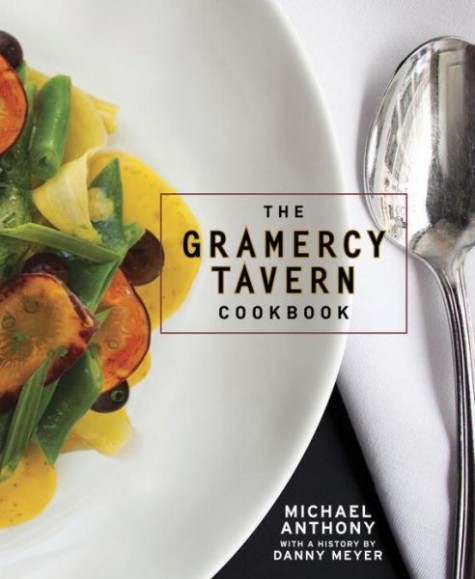


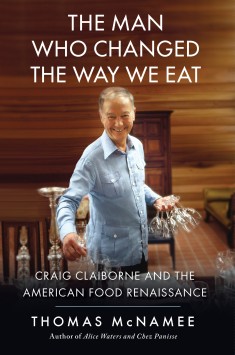
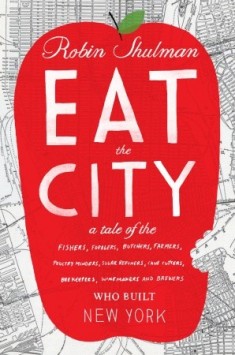
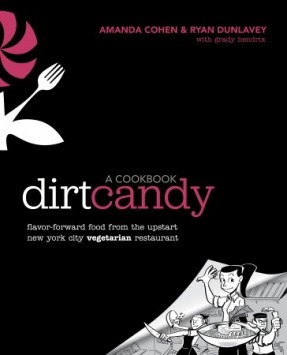
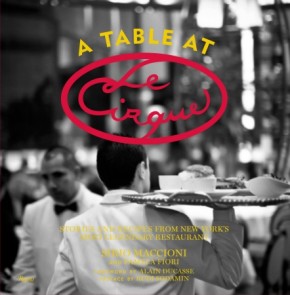
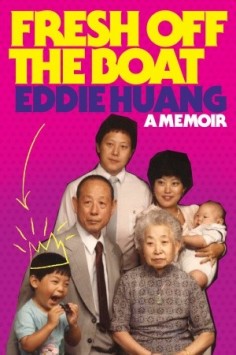

Leave a Reply